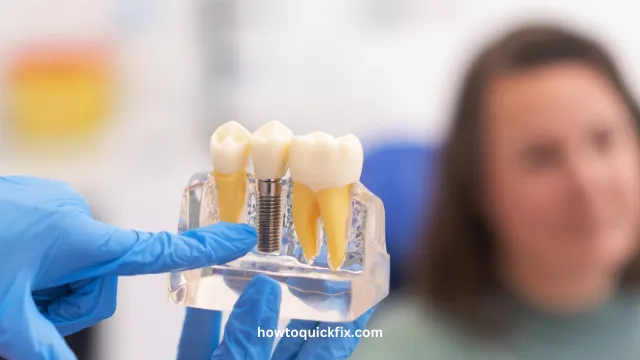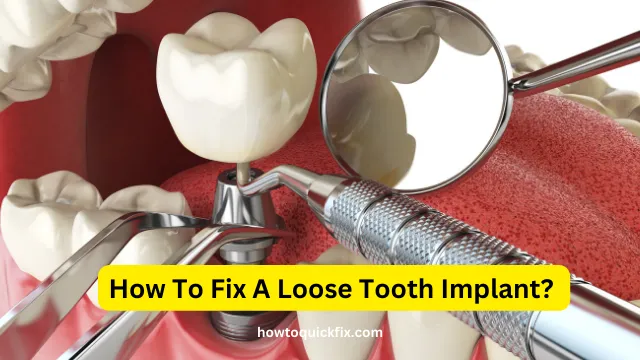A loose tooth implant can be a cause of concern for anyone who’s invested in restoring their smile and dental health. Implants are designed to be strong and permanent, so when one feels unstable, it’s natural to feel uneasy. Is it a simple fix, or could it signal a deeper issue? Understanding the root cause of the looseness is the first step to resolving the problem and preserving your implant.
Dental implants are a significant investment, both in terms of money and time. They not only restore your ability to chew and speak comfortably but also enhance your confidence. A loose implant could compromise these benefits if not addressed promptly. Identifying the signs early and knowing what steps to take can save you from more extensive procedures.
This blog post will guide you through the common causes, potential solutions, and preventive measures for a loose tooth implant. Whether you’re currently facing this issue or want to be prepared for the future, the following information will empower you to take action and maintain your oral health.

Contents
1. Understanding Why Tooth Implants Become Loose
a. The Implant vs. The Crown
It’s important to identify whether the implant post (inserted into the jawbone) or the crown (the visible tooth) is loose. The treatment varies depending on which part is affected.
b. Bone Loss Around the Implant
Bone deterioration is a common reason for implant instability. Poor oral hygiene or underlying conditions like peri-implantitis can weaken the bone structure.
c. Mechanical Issues
In some cases, the screw holding the crown to the implant may loosen due to wear and tear. This is a mechanical issue that can often be fixed without surgery.
2. Steps to Take When You Notice a Loose Implant
a. Avoid Self-Treatment
Trying to fix the issue on your own can worsen the problem. Consult your dentist immediately for professional advice.
b. Manage Discomfort
If the loose implant causes pain, use over-the-counter pain relievers and avoid putting pressure on the implant until you see a dentist.
c. Seek Immediate Dental Care
Promptly visiting your dentist allows them to assess the root cause and recommend an appropriate solution, such as tightening screws or addressing infections.
3. Professional Treatment Options
a. Tightening the Crown or Abutment
If the crown or abutment is loose, your dentist may tighten or replace the screws holding them in place, which is a quick and straightforward procedure.
b. Addressing Bone Loss
In cases of bone loss, your dentist may recommend bone grafting to rebuild the structure and stabilize the implant.
c. Replacing the Implant
If the implant itself has failed, a replacement may be necessary. This involves removing the old implant, preparing the site, and inserting a new one.
4. Preventing Implant Looseness
a. Maintain Excellent Oral Hygiene
Regular brushing, flossing, and dental cleanings help prevent bacterial buildup that can lead to complications like peri-implantitis.
b. Avoid Excessive Force
Using your implants to bite hard objects or grinding your teeth can loosen the screws. Wearing a nightguard can help if you grind your teeth.
c. Schedule Regular Dental Checkups
Routine visits to your dentist ensure your implant is monitored and maintained, reducing the risk of future issues.
5. The Importance of Early Detection
a. Signs of a Loose Implant
Watch for symptoms like discomfort, unusual movement, or changes in how your teeth fit together. These may indicate a problem.
b. Long-term Risks of Ignoring the Issue
Delaying treatment can lead to infection, bone loss, or complete implant failure, making the problem more complex and costly.
c. Empowering Yourself with Knowledge
Understanding your implant and how to care for it ensures you’re proactive about your dental health.
Conclusion:
A loose tooth implant doesn’t always mean disaster, but it does require prompt attention and professional care. By understanding the causes, seeking timely treatment, and maintaining good dental hygiene, you can protect your investment and ensure the longevity of your implant. Remember, your smile is worth the effort.
Taking preventive steps, such as regular dental checkups and avoiding undue stress on the implant, can make all the difference. If you suspect your implant is loose, don’t hesitate to consult your dentist. Acting early not only saves you from potential discomfort but also preserves the function and aesthetics of your dental restoration.
FAQs:
Why does my tooth implant feel loose?
It could be due to issues with the crown, bone loss, or mechanical problems like a loose screw.
Can a loose implant fix itself?
No, a loose implant requires professional intervention to address the underlying issue.
Is a loose implant painful?
Sometimes it is painless, but in other cases, it may cause discomfort or sensitivity.
How can I prevent implant issues?
Maintain proper oral hygiene, avoid biting hard objects, and schedule regular dental checkups.
What happens if I ignore a loose implant?
Ignoring it can lead to infection, bone loss, or complete implant failure, requiring more extensive treatment.
Can a loose crown be tightened without replacing the implant?
Yes, in many cases, the crown or screws can be tightened without affecting the implant itself.








